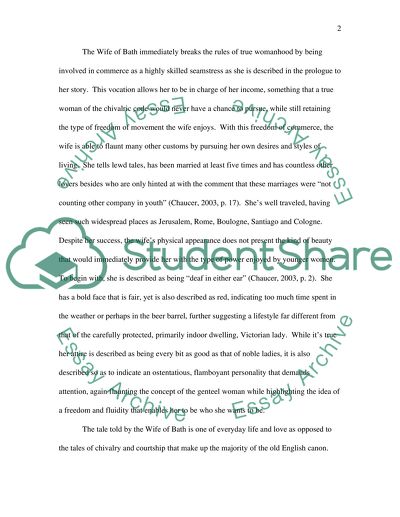Cite this document
(“The Wife of Bath: A Pre-Victorian Viewpoint Essay”, n.d.)
Retrieved from https://studentshare.org/history/1542969-the-wife-of-bath-a-pre-victorian-viewpoint
Retrieved from https://studentshare.org/history/1542969-the-wife-of-bath-a-pre-victorian-viewpoint
(The Wife of Bath: A Pre-Victorian Viewpoint Essay)
https://studentshare.org/history/1542969-the-wife-of-bath-a-pre-victorian-viewpoint.
https://studentshare.org/history/1542969-the-wife-of-bath-a-pre-victorian-viewpoint.
“The Wife of Bath: A Pre-Victorian Viewpoint Essay”, n.d. https://studentshare.org/history/1542969-the-wife-of-bath-a-pre-victorian-viewpoint.


